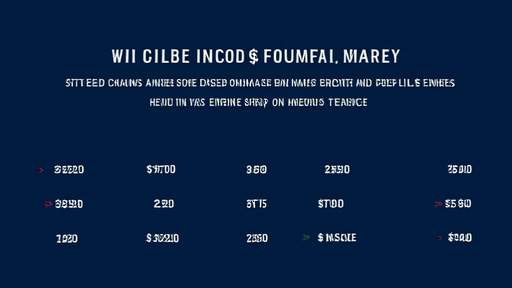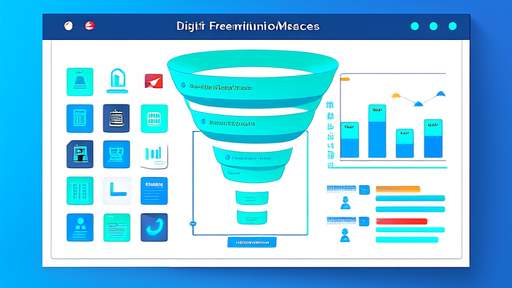The valuation models underpinning unicorn startups—privately held companies valued at over $1 billion—have long been the subject of both fascination and skepticism. In recent years, however, the parameters used to justify these sky-high valuations have come under intense scrutiny. Analysts and investors are increasingly questioning whether traditional metrics still hold water in an era of rapid technological disruption, speculative fervor, and unconventional business models.
The Illusion of Growth-at-All-Costs
One of the most glaring distortions in unicorn valuation models is the overemphasis on top-line growth while sidelining profitability. For years, venture capitalists and late-stage investors rewarded startups for aggressive customer acquisition, often at the expense of sustainable unit economics. This "growth-first" mentality created a feedback loop where companies prioritized burning cash to demonstrate market dominance, even if their underlying business models were structurally unprofitable.
The problem with this approach became painfully evident during the 2022-2023 market correction. Many high-flying unicorns saw their valuations slashed when investors suddenly demanded paths to profitability. Companies that had been valued at 20x or 30x revenue found themselves struggling to justify even half those multiples. The distortion created by years of growth obsession left many startups vulnerable when market sentiment shifted.
The Mirage of Addressable Market Sizing
Another parameter that frequently distorts unicorn valuations is the exaggerated Total Addressable Market (TAM) projections. Startup pitch decks routinely claim to be targeting trillion-dollar markets, often by combining disparate industries or making unrealistic assumptions about market penetration. These inflated TAM figures then get used to justify valuation multiples that would be indefensible in more mature companies.
In reality, most unicorns operate in niche segments of their purported TAM. A fintech startup might count every financial transaction globally as part of its addressable market, while in practice competing for a tiny fraction of that volume. When these unrealistic TAM assumptions collide with actual operating metrics—typically during due diligence for an IPO or acquisition—the valuation gaps can be staggering.
The Benchmarking Paradox
Valuation models for unicorns often rely heavily on comparable company analysis (comps), but this approach contains inherent flaws in the private markets. Unlike public companies where valuation multiples are continuously tested by liquid markets, private company comps are based on sporadic funding rounds that may reflect strategic considerations rather than true economic value.
This creates a circular reference problem: Unicorn A's valuation gets benchmarked to Unicorn B's latest funding round, which was itself based on Unicorn C's valuation. When the initial comps contain distortions—as often happens when a few richly valued companies set the tone for an entire sector—the error compounds across the ecosystem. The result is valuation models that appear mathematically rigorous but are actually built on shaky foundations.
The Discount Rate Dilemma
Traditional valuation models incorporate discount rates that reflect risk profiles, but unicorn valuations frequently use artificially low discount rates that don't adequately account for startup risks. Many models apply discount rates comparable to established tech companies rather than accounting for the substantially higher probability of failure inherent in early-stage ventures.
This distortion became particularly pronounced during the era of near-zero interest rates, when the search for yield led investors to accept increasingly optimistic assumptions. As capital became more expensive in 2022-2023, the flaws in these models were exposed. Startups that had been valued using 8-10% discount rates suddenly needed to be reevaluated at 15-20% or higher, vaporizing billions in paper valuation.
The Liquidity Premium Fiction
Private market valuations often ignore the liquidity premium that public market investors demand. A share of a publicly traded company can be sold within seconds, while private company shares might take months or years to find a buyer—if at all. Yet most unicorn valuation models either ignore this distinction or apply arbitrary adjustments that don't reflect the true illiquidity discount.
This oversight became particularly problematic during the recent IPO drought, when many unicorns discovered their "valuation" was essentially theoretical. Without a liquid market to validate their worth, these companies found their paper valuations meant little when they actually needed to raise cash or provide exits for early investors.
The Option Value Overreach
Many unicorn valuation models incorporate substantial "option value"—the potential for future expansion into adjacent markets or technologies. While this approach has theoretical merit, in practice it's often used to justify valuations that bear no relation to current operations. Startups with single products in single markets routinely claim option value that would make a Fortune 500 company blush.
The danger arises when these speculative future opportunities get baked into present valuations as if they were certainties. When the anticipated expansions fail to materialize—as they frequently do—the entire valuation construct collapses. This pattern has repeated itself across multiple hype cycles, from the dot-com bubble to the recent SPAC boom.
Path Forward: Toward More Realistic Models
The solution to these valuation distortions isn't abandoning models altogether, but rather developing more nuanced approaches that account for the unique challenges of high-growth startups. This might include scenario-based modeling that explicitly accounts for different growth trajectories, more conservative assumptions about market penetration, and better frameworks for assessing true technological differentiation.
Investors are already moving in this direction, demanding clearer paths to profitability and more realistic growth projections. The next generation of unicorn valuation models will likely place greater emphasis on capital efficiency, sustainable competitive advantages, and actual free cash flow potential rather than vanity metrics.
As the startup ecosystem matures, the era of valuation parameters divorced from economic reality may finally be coming to an end. The correction will be painful for some, but ultimately healthier for the innovation economy as a whole. The unicorns that survive will be those built on genuine value creation rather than financial engineering and optimistic assumptions.

By /Jun 3, 2025

By /Jun 3, 2025

By /Jun 3, 2025

By /Jun 3, 2025

By /Jun 3, 2025

By /Jun 3, 2025

By /Jun 3, 2025

By /Jun 3, 2025

By /Jun 3, 2025

By /Jun 3, 2025

By /Jun 3, 2025

By /Jun 3, 2025

By /Jun 3, 2025

By /Jun 3, 2025

By /Jun 3, 2025

By /Jun 3, 2025

By /Jun 3, 2025

By /Jun 3, 2025

By /Jun 3, 2025

By /Jun 3, 2025